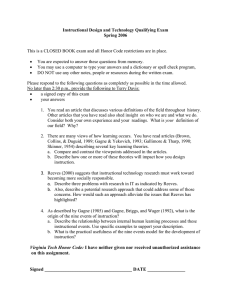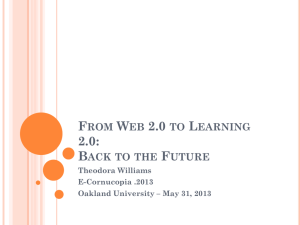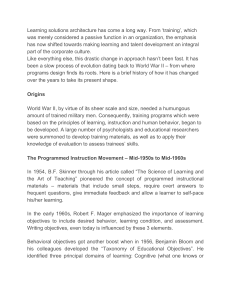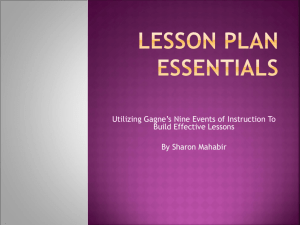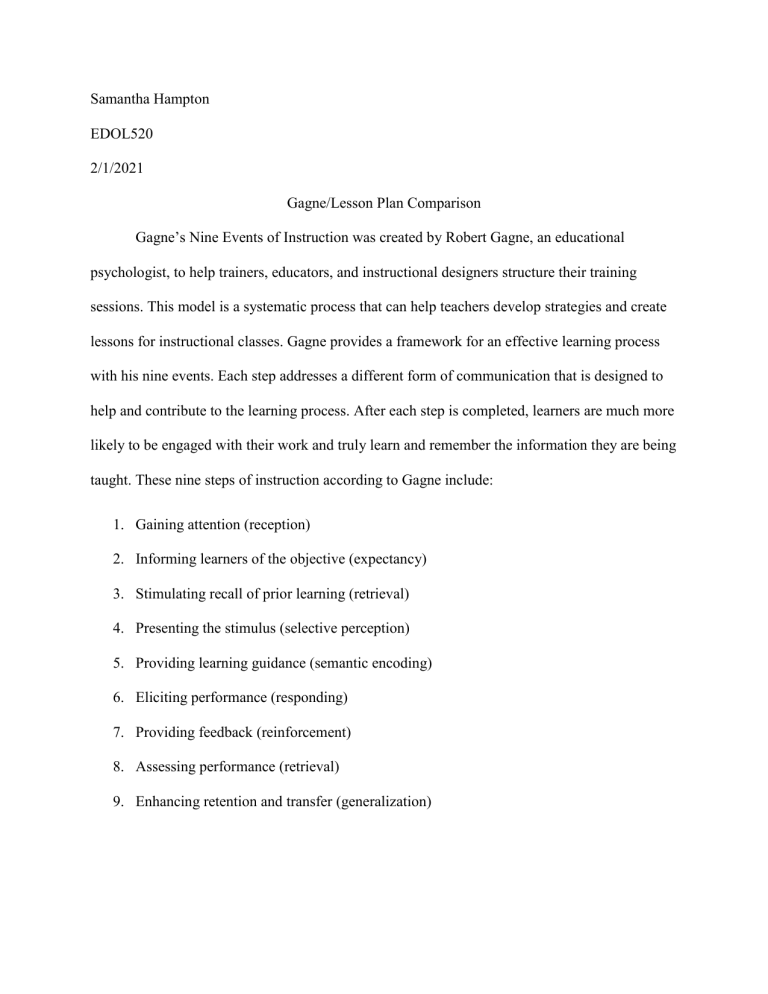
Samantha Hampton EDOL520 2/1/2021 Gagne/Lesson Plan Comparison Gagne’s Nine Events of Instruction was created by Robert Gagne, an educational psychologist, to help trainers, educators, and instructional designers structure their training sessions. This model is a systematic process that can help teachers develop strategies and create lessons for instructional classes. Gagne provides a framework for an effective learning process with his nine events. Each step addresses a different form of communication that is designed to help and contribute to the learning process. After each step is completed, learners are much more likely to be engaged with their work and truly learn and remember the information they are being taught. These nine steps of instruction according to Gagne include: 1. Gaining attention (reception) 2. Informing learners of the objective (expectancy) 3. Stimulating recall of prior learning (retrieval) 4. Presenting the stimulus (selective perception) 5. Providing learning guidance (semantic encoding) 6. Eliciting performance (responding) 7. Providing feedback (reinforcement) 8. Assessing performance (retrieval) 9. Enhancing retention and transfer (generalization) The purpose of this paper is to review these nine events along with a pilot lesson plan and note the similarities and differences found in both. This can help teachers or future teachers learn how to create a more effective lesson plan. The first similarity I see between Gagne’s nine steps and the pilot lesson plan is the need to identify the learning targets/objective(s). This allows learners to organize their thoughts on what they will learn and create the right head space for them to begin learning. Another similarity is the use of pre-assessments to establish all students’ baseline knowledge and skills for any lesson. This aligns with step three of the events of instruction, which says to stimulate recall of prior learning. This will help students build on what they have already learned and make connections. Step five of Gagne’s instructional events is similar to the topic of differentiation in the pilot lesson plan. When you provide differentiation in your lesson, it provides learning guidance for all students, no matter how they learn. Methods to provide learning guidance and differentiation include providing instructional support, modeling varied learning strategies, using examples and non-examples, and/or providing case studies, analogies, visual images, etc. There were also a few differences between the pilot lesson plan and Gagne’s nine events of instruction. The pilot lesson plan focuses more on how a teacher would break down each component of their lesson for students. It is more detailed and focused while Gagne’s steps are more of a broad overview. Gagne provided a list of what to cover when writing an instructional plan and the lesson plan breaks down how to cover it. Another difference is that the lesson plan goes a step further and brings communication with parents/guardians into the lesson as well. It asks to provide a plan for how you will communicate with students and guardians about the learning progress for the lesson objectives. The pilot lesson plans is more specific to a school student/teacher setting while Gagne’s nine steps can be used in various instructional settings. In conclusion, I believe both the pilot lesson plan and Gagne’s Nine Events of Instruction are extremely useful for school teachers. Gagne’s steps are also useful for trainers or instructional teachers in any field as it breaks down the learning/teaching process whether you are in a classroom setting or otherwise. The sample lesson plan I use to structure my own lessons look similar to the pilot lesson plan provided. The only difference is that the lesson plan template I use focuses more heavily on aligning the lesson/content to the standards that are being covered. I plan on using both the lesson plan and Gagne’s steps when writing future lesson plans. Most teachers follow those nine steps intuitively, but it is great for organization and clarification to be able to write down how you plan on accomplishing each step.
